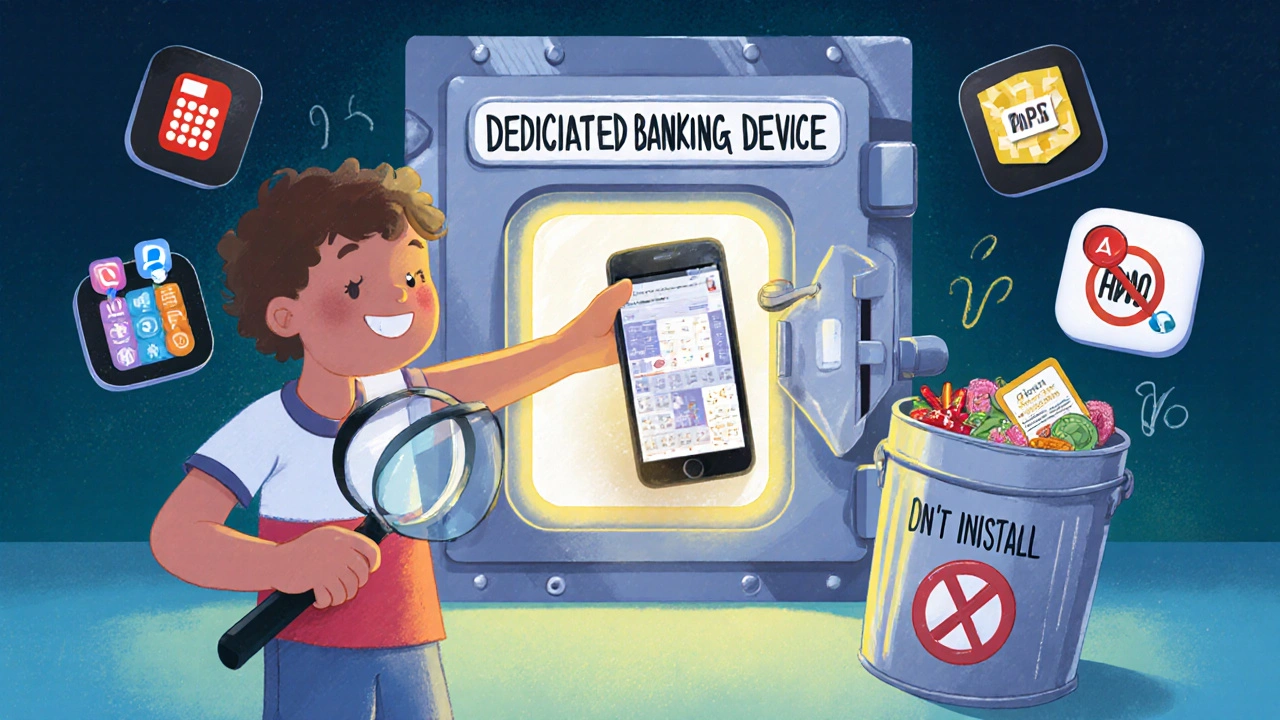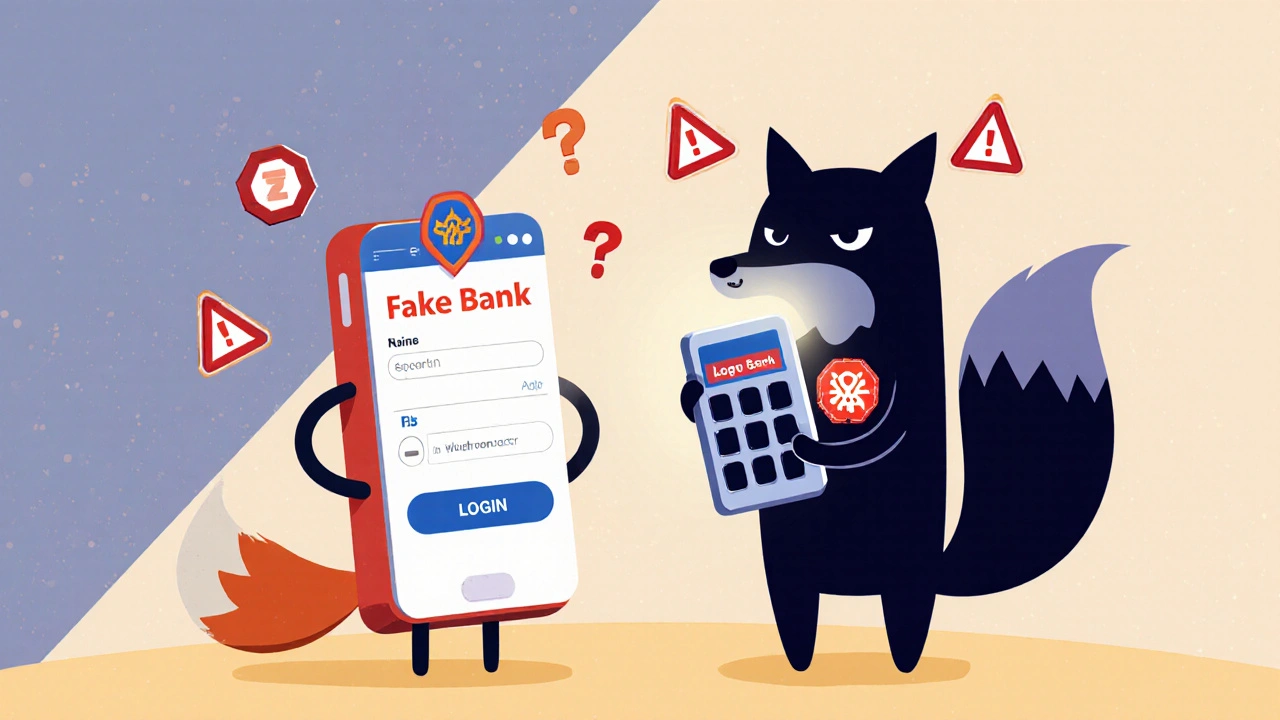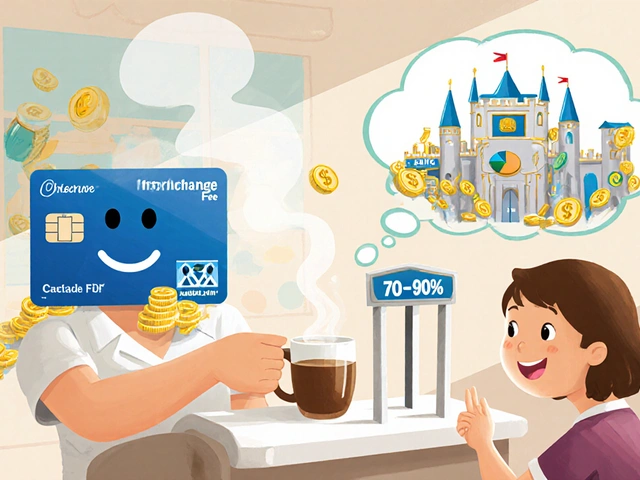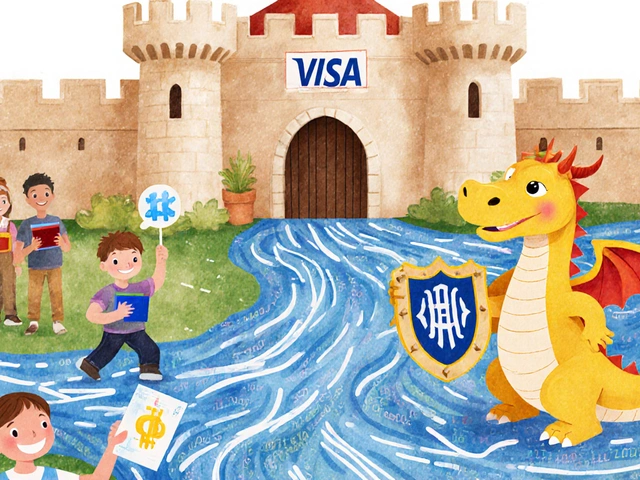Mobile Banking Security Check
This interactive tool helps you assess your mobile banking security risk level based on your current security practices. Answer the questions below to get a personalized security assessment.
Every time you open your bank app on your phone, you’re trusting it with your money. But what if that app isn’t really yours? In 2025, mobile malware is no longer a distant threat-it’s a daily risk. Cybercriminals are building tools that can steal your login details, record your screen, mimic your face for facial recognition, and even take over your device without you noticing. And they’re not targeting just big companies-they’re going after you.
How Mobile Banking Malware Works Today
Modern banking malware doesn’t just crash apps or pop up ads. It hides inside fake versions of your bank’s app, disguised as a calculator, a reward app, or even a job search tool. Once installed, it waits. It watches your typing. It captures your biometrics. It records your two-factor codes. Then, when you log in, it steals everything-and often does it silently.
Android devices are the main target. In the first half of 2025, malware detections on Android were nearly four times higher than the same period in 2024. One of the most dangerous strains, Triada, is embedded in the firmware of some phones before they even leave the factory. Even if you reset your phone, Triada comes back. It grabs your messages, call logs, and contacts-and sends them to criminals who use that data to impersonate you.
On iOS, the threat is quieter but just as real. GoldPickaxe uses stolen facial data to create deepfake videos that trick banks’ facial recognition systems. This isn’t science fiction-it’s happening right now. In Q2 2025, Promon’s report found that 92% of financial firms consider AI-powered botnets a top threat. These bots don’t just launch attacks. They learn how your bank’s app works, then mimic your behavior to slip past fraud detection.
The Real Cost of a Compromised App
It’s not just about losing money. When your financial app is hacked, the damage spreads. In 58% of cases, malware leads to outright fraud. In 21%, you lose cash directly. In 14%, your personal data ends up on dark web marketplaces. And in 7% of cases, banks face operational chaos-like when malware floods their servers with fake login attempts, triggering system-wide lockdowns.
Real people are losing thousands. On Twitter, users tagged #MobileBankingScam over 2,300 times in Q2 2025. Each incident averaged $1,850 in losses. One Reddit user in Texas lost $4,200 after installing a fake Chase app downloaded from a Google search result. Another in India lost $3,100 after a “loyalty rewards” app stole his UPI PIN.
Corporate damage is worse. Spiceworks forums reported that 68% of companies with infected employee devices had financial data leaked within 72 hours. One bank in Brazil had to shut down mobile services for 11 hours after Triada exfiltrated internal transaction logs from 17 corporate phones.
Where the Threats Are Hiding
Malware isn’t just on shady websites. It’s in the Google Play Store. In Brazil, the Pylcasa trojan disguised itself as a calculator app. In Turkey, the Coper trojan mimicked local bank apps so perfectly that users didn’t notice until their accounts were drained. In Uzbekistan, fake job apps collected names, addresses, and ID numbers to sell to identity thieves.
Even Apple’s App Store isn’t safe. In early 2025, researchers found the second known spyware Trojan to slip past Apple’s review process. It pretended to be a VPN app-but its real job was stealing one-time passwords (OTPs) sent by banks. These apps aren’t rare. They’re growing. Promon’s report says at least 11 new banking malware strains emerged in H1 2025 alone, including Crocodilus, BTMOB, and SparkKitty.
And it’s not just apps. Rooted or jailbroken devices are 22% more likely to be infected. That’s because users who root their phones often install “cheat tools” for games or unlock premium features. Those tools? They’re often packed with malware. One study found that 10-12% of all mobile malware now comes from these “hacked” apps.

Why Your Phone Is More Vulnerable Than You Think
Android had 1,421 known security flaws in 2024-a 58% jump from 2023. That’s a lot of doors for malware to kick in. And most users don’t update their phones. In fact, over 40% of Android devices still run versions that haven’t received a security patch in over a year. That’s like leaving your front door open with a sign that says “Welcome.”
Even if you keep your phone updated, you’re not safe. Banking trojans now use virtualization overlays-fake screens that pop up over your real bank app. You think you’re typing your PIN into your bank’s app. You’re not. You’re typing it into a fake screen built by malware. The real app stays open in the background, looking normal. No red flags. No alerts. Just your money disappearing.
And then there’s NFC. Some new malware can trigger your phone’s NFC chip to make contactless payments without your permission. You didn’t tap your phone. You didn’t approve anything. But your card got charged. This isn’t theoretical. It’s been confirmed in lab tests by Insikt Group.
How to Protect Yourself Right Now
Here’s what actually works in 2025:
- Only download banking apps from official stores-and double-check the developer name. If it says “Chase Bank LLC” and not “Chase Mobile Inc.,” walk away.
- Never install apps from links in texts or emails. Even if they look real. Criminals now use AI to clone your bank’s logo, tone, and even your name in the message.
- Turn off “Install Unknown Apps” on Android. Go to Settings > Security > Install Unknown Apps. Make sure every app has it turned OFF.
- Use biometric login only if your bank supports it. If your bank asks for a fingerprint or face scan, that’s good. But if an app you downloaded asks for it, that’s a red flag.
- Check your bank’s official app for security updates. Most banks now push push notifications when a new version is available. Don’t ignore them.
- Use a dedicated device for banking. If you can, use an old phone you don’t use for anything else. No games. No social media. Just banking. That cuts your risk by over 70%.
What Banks Are Doing (And What They Should Be Doing)
Banks are spending more than ever. In 2025, they’re allocating 22% of their cybersecurity budgets to mobile security-up from 15% in 2024. That’s good. But most of that money goes into firewalls and monitoring tools that can’t see what’s happening on your phone.
The real solution? On-device AI. Some banks are starting to use behavioral analytics that learn your normal patterns. If you usually log in at 8 a.m. from home, and suddenly you’re logging in at 2 a.m. from a new country, the app locks you out and asks for a live video selfie. That’s real protection.
Regulators are catching up too. By Q2 2025, 78% of global financial regulators required banks to include real-time malware detection in their apps. That means your bank’s app should now scan for known threats every time you open it. If it doesn’t, ask why.
What’s Coming Next
By Q4 2025, AI-powered attacks will make up 65% of all mobile financial malware. That means fake voice calls that sound like your bank’s customer service rep. Deepfake videos that say, “Your account is locked-click here to verify.” Texts that mimic your child’s phone number asking for money.
And it’s getting harder to fight. Eighty-seven percent of security pros say traditional antivirus tools are useless against this new wave. The only defense? Behavior-based detection. Apps that learn your habits. Phones that know when something feels off-even if the malware looks perfect.
The bottom line: Your phone is now your most important financial tool. And like your wallet, it needs to be guarded. Not just with passwords, but with awareness, discipline, and smart choices. The threats are real. The tools to stop them exist. It’s up to you to use them.
Can I trust banking apps from the Google Play Store?
Not always. While Google scans apps, malicious ones still slip through-especially fake banking apps disguised as calculators, reward apps, or job tools. Always check the developer name, download count, and reviews. If the app has fewer than 100,000 downloads or has recent negative reviews mentioning security issues, avoid it.
Does iOS have more security than Android for banking?
iOS is generally more secure due to Apple’s tighter app controls and faster updates. But it’s not foolproof. Malware like GoldPickaxe has bypassed Apple’s review process using deepfake tech to trick facial recognition. iOS users are still at risk, especially if they jailbreak their phones or click suspicious links.
What should I do if I think my phone has banking malware?
First, disconnect from Wi-Fi and mobile data. Then, check your installed apps for anything unfamiliar. Uninstall suspicious apps immediately. Run a scan with a trusted mobile security app like Kaspersky or Lookout. Change your banking passwords from a clean device. Contact your bank to freeze accounts if needed. If you suspect Triada or pre-installed malware, factory reset won’t help-you may need professional help or a new phone.
Are two-factor authentication (2FA) codes safe from malware?
No. Banking trojans like Brokewell can intercept SMS codes, steal codes from authenticator apps, and even trigger fake 2FA prompts to trick you into entering them. The safest option is to use app-based authenticators like Google Authenticator or Authy-not SMS-and never enter 2FA codes unless you initiated the login yourself.
Can I use antivirus apps to stop mobile banking malware?
Traditional antivirus apps can catch some known malware, but they’re useless against new or AI-driven threats. They can’t detect overlays, behavioral mimicry, or deepfake bypasses. Instead, use mobile threat defense (MTD) tools that monitor app behavior in real time. Many banks now offer these as part of their app-check your settings.
Is it safe to use public Wi-Fi for banking?
No. Even if your bank uses encryption, malware on your phone can capture data before it’s encrypted. Always use your mobile data connection for banking. If you must use Wi-Fi, turn on a trusted VPN-but remember, a VPN won’t stop malware already on your device.
How do I know if my bank’s app has malware protection built in?
Look in the app’s settings for options like “Security Scan,” “Malware Detection,” or “Device Integrity Check.” Banks like Chase, Bank of America, and Revolut now include these features. If you don’t see them, contact customer support and ask if their app checks for known threats on your device. If they say no, consider switching to a bank that does.
If you’re a frequent mobile banking user, treat your phone like a vault. Lock it. Monitor it. Update it. And never assume safety just because an app looks official. The best defense isn’t software-it’s skepticism.




I’ve been using a dedicated old iPhone just for banking since last year, and it’s changed everything. No games, no social apps, no risky downloads-just my bank app and a notes app for receipts. I didn’t think it would make that much difference, but I haven’t had a single alert or suspicious notification since. It’s not glamorous, but it’s the closest thing to a digital safe I’ve found.
Also, I turn off Bluetooth and NFC when I’m not using them. I know it sounds overkill, but after reading about that NFC malware trick, I’m not taking chances. My bank’s app has a device integrity check now-I enabled it, and it actually warned me about an outdated system library I didn’t even know was there.
Y’all are underestimating how wild this has gotten. We’re not talking about some sketchy APK from a forum anymore-we’re talking about AI-generated deepfakes of your own face tricking biometric auth, fake banking apps that replicate your bank’s UI down to the font weight, and malware that waits for you to type your PIN before overlaying a fake screen that looks identical to the real one.
And the worst part? Your phone doesn’t even know it’s compromised. No pop-ups, no lag, no weird battery drain. Just your balance slowly evaporating while you’re scrolling TikTok. I saw a demo where a trojan cloned a user’s voice after 3 minutes of them talking to Alexa. Now imagine that voice calling your bank saying, ‘Hey, I lost my card, can you reset my PIN?’ They don’t even need your password anymore. They just need your voice, your face, and your habits. It’s horror movie stuff, and it’s already here.
My cousin lost ₹2.5 lakh last month because he downloaded a ‘UPI reward app’ from a WhatsApp forward. He thought it was from Paytm. It wasn’t. He didn’t even notice until his bank called him about suspicious transactions. I told him to stop clicking random links, but he said, ‘It looked real.’
Now I use only my bank’s official app. No third-party tools. No ‘free recharge’ apps. And I never enter OTPs unless I started the login myself. Simple. But it saved me. 😌
Let me be brutally clear: if you’re still using SMS-based 2FA for your bank, you’re not secure-you’re just delaying the inevitable. Banking trojans like Brokewell and Triada don’t just intercept SMS-they actively hijack your entire messaging stack, spoof your carrier, and trigger fake 2FA prompts that look identical to the real ones. You think you’re entering your code to log in? You’re handing it to a criminal who’s already logged in as you.
App-based authenticators? Still not enough. If your device is compromised, they can capture the TOTP too. The only thing that works is behavioral biometrics-your bank’s app should know if you’re you based on how you hold your phone, how fast you type your PIN, whether you’re using your thumb or index finger. If your bank doesn’t offer that? Switch. Now. This isn’t about being paranoid-it’s about surviving in a world where your phone is no longer a tool, it’s a target. And the hackers? They’re not amateurs. They’re corporate-grade threat actors with budgets bigger than most startups. You’re not being hacked because you’re careless. You’re being hacked because the system is broken. And the only person who can fix it… is you.